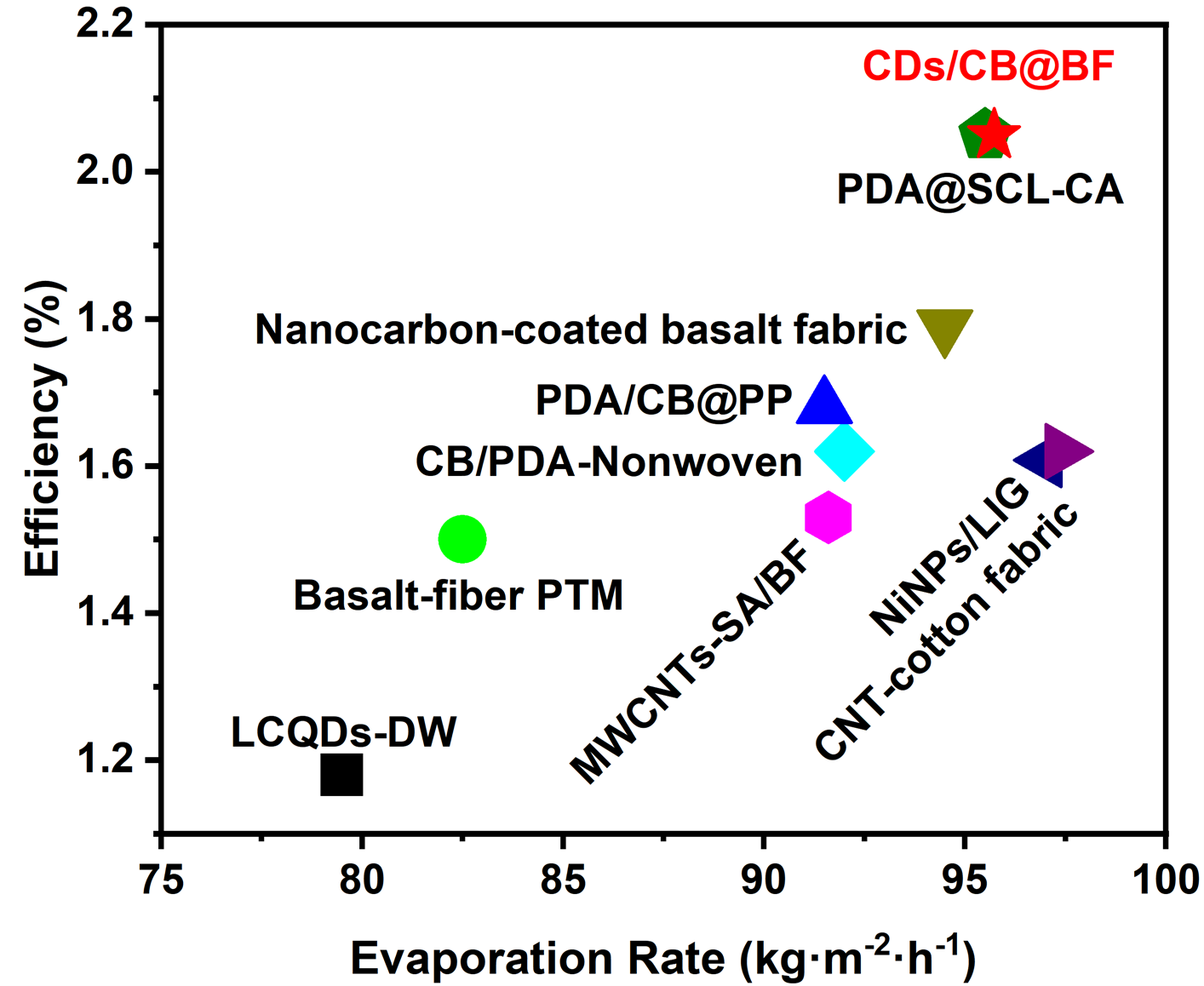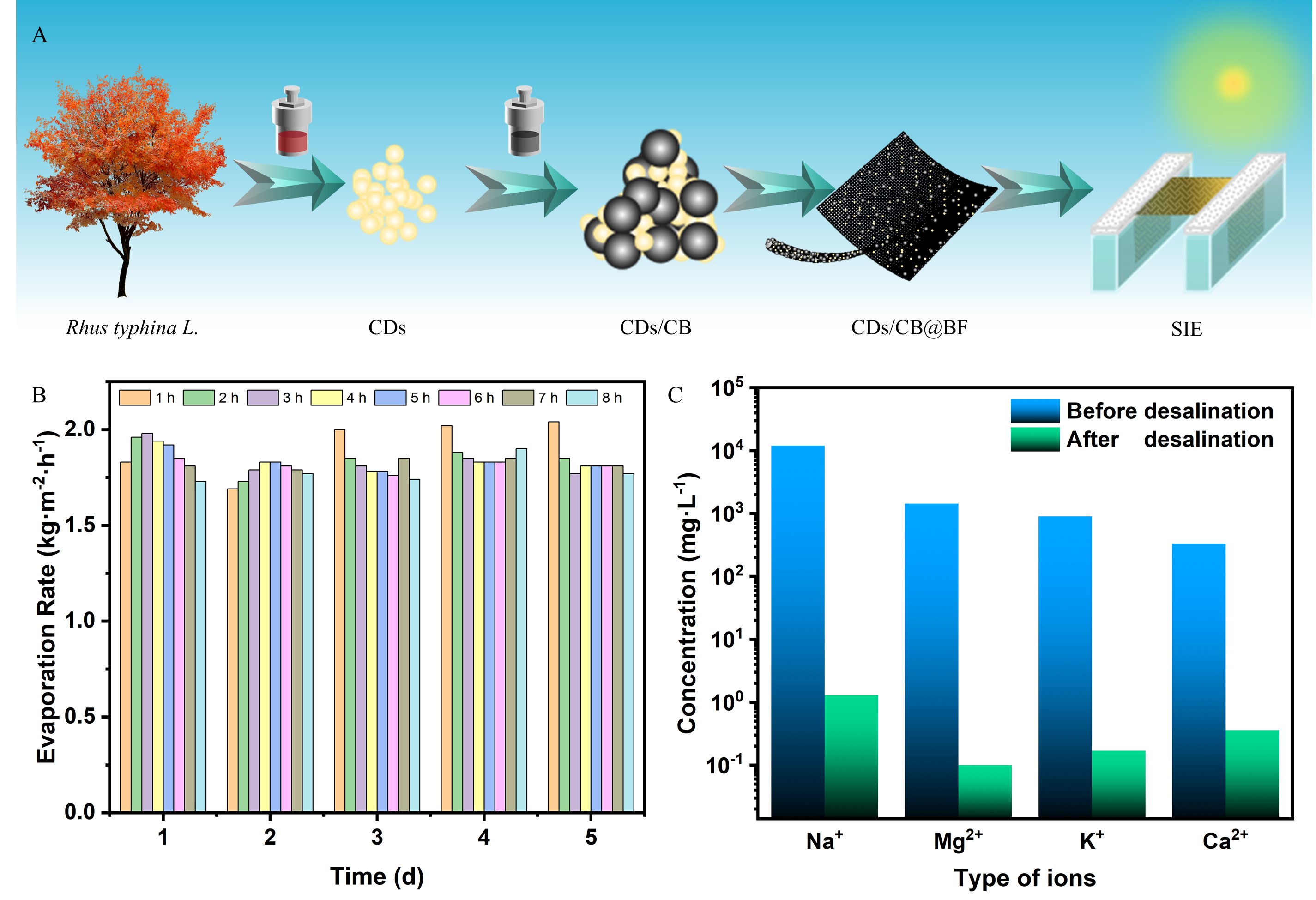A Novel Basalt Fiber Fabric for High Salinity Water Purification
Editor: | Apr 07,2025
With the increasing scarcity of global freshwater resources, developing efficient, economical, and environmentally friendly solar-driven desalination technologies have become critical to address water resource crises. Traditional desalination techniques, such as membrane distillation and mechanical vapor compression, face limitations in large-scale applications due to complex equipment, high capital costs, and significant energy consumption. In recent years, solar interfacial evaporation (SIE) technology has emerged as a research hotspot due to its high efficiency, low cost, and environmental friendliness. Concurrently, invasive plant species, due to their competitive dominance and ecological destructiveness, have encroached upon approximately 13 million hectares of agricultural land worldwide. Conventional management approaches, including physical and chemical methods, are costly and risk secondary environmental pollution. Thus, the effective control and resource utilization of invasive plants remain urgent challenges.
Prof. Abudukeremu Kadier and Peng-Cheng Ma’s group at the Xinjiang Technical Institute of Physics and Chemistry (XTIPC) of the Chinese Academy of Sciences (CAS) achieved groundbreaking progress in invasive plant-derived carbon dots (CDs)-based solar interfacial evaporation materials. Researchers utilized leaves from the invasive species Rhus typhina L. as a carbon source to synthesize CDs via a hydrothermal synthesis method. These CDs were then combined with carbon black (CB) and deposited onto basalt fabric (BF) via an immersion coating method, successfully fabricated a novel two-dimensional photothermal fabric (CDs/CB@BF). Experimental results demonstrated that the evaporator achieved an evaporation rate of 2.05 kg·m-2·h-1 and a photothermal conversion efficiency of 95.72% under 1 sun irradiation.

Fig. 1 Comparison of the evaporation performances of CDs/CB@BF with other types of evaporators reported in the literature under 1 sun irradiation
The material’s surface enriched with hydrophilic functional groups such as hydroxyl and carboxyl, significantly enhanced water molecule adsorption and transport efficiency while reducing evaporation enthalpy (1681 J·g-1). Furthermore, the CDs/CB@BF evaporator exhibited excellent physicochemical stability in cyclic tests, with no significant decline in evaporation rate after multiple cycles. It maintained stable performance in wastewater with pH values ranging from 3 to 12. In simulated seawater (3.5 wt% salinity), the material retained an evaporation rate of 1.81 kg·m-2·h-1, and the treated water’s ion concentrations were drastically reduced to meet the World Health Organization drinking water standards. Notably, the material efficiently desalinated seawater and effectively purified complex wastewater, including oil-in-water emulsions and dye-contaminated solutions. Economic analysis revealed a low fabrication cost of 20.75 $·m-2 for CDs/CB@BF, with an efficiency-to-cost ratio of 87.23 g·h-1·$-1, demonstrating significant economic feasibility. This study provides a novel strategy for resource utilization of invasive plants and advances the development of high-performance, cost-effective, and eco-friendly photothermal materials for solar-driven desalination. In the future, such materials are expected to find broad applications in large-scale seawater desalination, high-salinity wastewater treatment, and industrial effluent purification, offering vital technical support to mitigate global water scarcity.
The research findings were recently published as a Research Article in Separation and Purification Technology, entitled “Invasive plant-derived carbon dots and carbon black co-deposited basalt fiber fabric as an efficient solar interface evaporator for high salinity water purification”.
This work was supported by the Natural Science Foundation of Xinjiang Uygur Autonomous Region, the Department of Foreign Expert Services of the Ministry of Science and Technology, China, the Tianshan Talent Program for Scientific and Technological Innovation in Xinjiang, and the Western Light Program of the Chinese Academy of Sciences.

Fig. 2: (A) Fabrication of the CDs/CB@BF photothermal fabrics; (B) CDs/CB@BF long-term stability test of photothermal fabrics; (C) Comparison of ion concentrations after desalination.
附件下载:
 (86) 991-3838931
(86) 991-3838931 lhskj@ms.xjb.ac.cn
lhskj@ms.xjb.ac.cn (86)991-3838957
(86)991-3838957 40-1 Beijing Road
Urumqi, XinjiangChina
40-1 Beijing Road
Urumqi, XinjiangChina